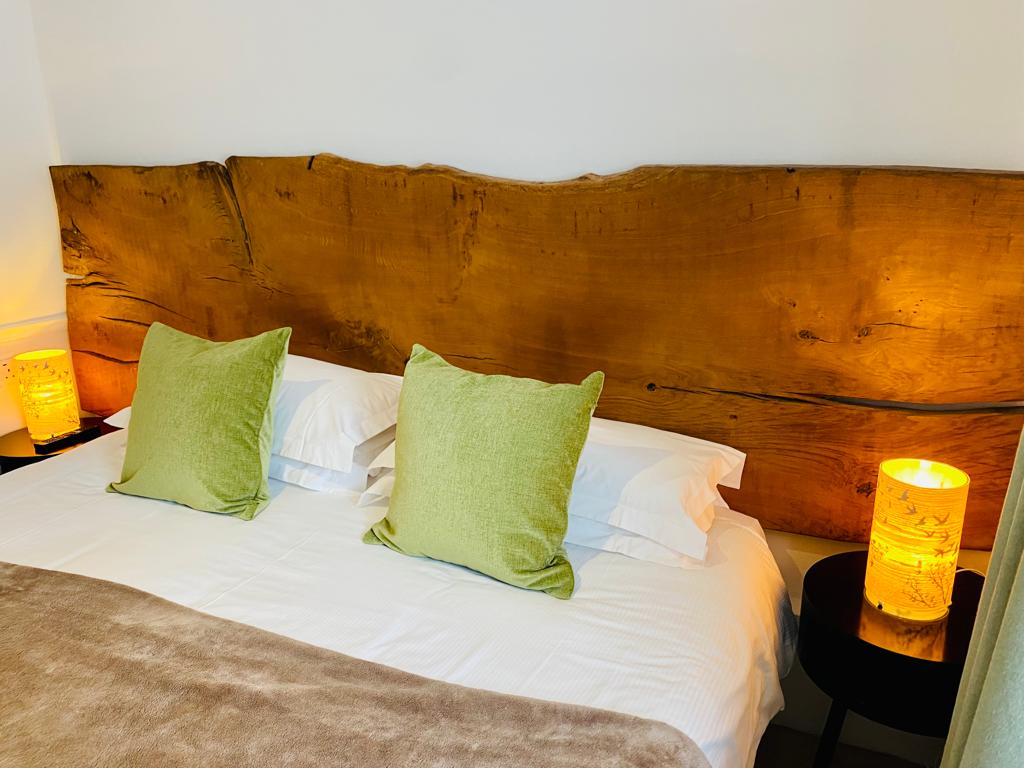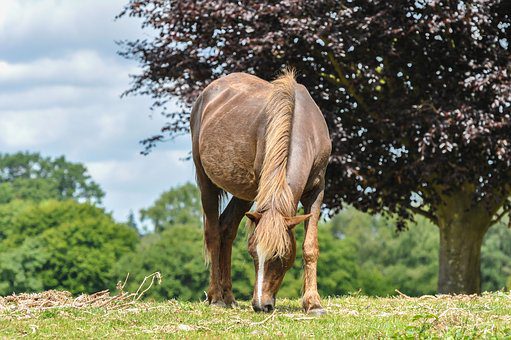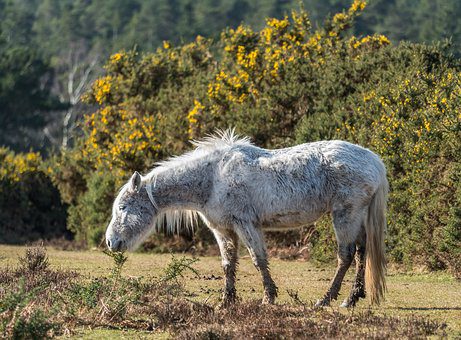New Forest bedroom Verderers Rest
The New Forest bedroom Verderers Rest, is named after the official people who take care of the New Forest. Verderers protect and administer the New Forest’s unique agricultural practices and conserve its landscape.
All of Cottage Lodge hotel’s 16 bedrooms are named after people or places significant to the New Forest, or with the original cottage building. Rooms are individually-designed and furnished and no two are alike.

The Hotel room
Discover the amazing oak headboard from a huge oak tree created by artisan Rob Dyer from a tree that fell in a New Forest farm. It took four men to carry it into the building.
The New Forest bedroom Verderers Rest is a ground floor hotel room with a view of a courtyard. This is a popular room at the hotel. It can be set up to be twin beds or super-king 6-ft-wide double.
With the verderers playing an integral role in the management of the forest, it seemed only right that we had a large reflection of the New Forest featured in the bedroom.

Verderers Court
Evidence from the 13th century indicates that the Verderers were originally a court within the Forest. These were people authorised by the Crown and elected by the County. The court sat to hear cases of offences within the Sovereign’s Forest. They could deal with minor offences directly with fines. More serious cases were referred to higher courts – ultimately the Forest Eyre.
Verderers’ powers were extended in the 17th & 18th centuries. This was to address offences undermining the planting and preservation of oak for ship-building. Examples of these offences were breaking Inclosure fences or encroachments on Crown land. They were given powers to deal with trespassers and abuses. More Forest officers were employed to strengthen numbers.
In 1877, the Verderers’ Court was reconstituted by a New Forest Act of Parliament. The Act abolished the former oath of allegiance to the Crown. The Act required the appointment by the monarch of the Official Verderer and (originally) five Verderers. These were to be chosen by the Commoners and Parliamentary voters in the New Forest parishes. They were to be the guardians of Commoners, common rights, and the Forest landscape.
The New Forest Act of 1949 increased the number of Verderers. Nowadays, they comprise of five elected, one Official Verderer, and four appointed members and can make and amend byelaws as neccessary.
What do the Verderers look after?
Agisters
The Agisters are employees of the Verderers. Their work is to assist in the management of Commoners’ stock in the Forest. Their job is:
- To watch over the Forest to ensure that the owners of depastured stock, and others, meet the requirements of the Verderers in respect of stock welfare, payment of marking fees, etc.;
- Inform the Verderers of any possible breaches of the Verderers’ byelaws;
- Attend road accidents and other incidents involving commoners’ animals; deal with injured animals at the scene and humanely destroying animals if necessary;
- Organise the construction and ongoing maintenance of stock pounds within their area;
- Arrange and manage the rounding up of ponies and cattle in the Autumn and at other times as required;
- by regular inspection on foot, vehicle and horseback, an Agister will acquire, and maintain, a thorough and up to date knowledge of depastured stock and of ground conditions.

Who do the New Forest animal belong to?
Forest Rights
Commoners of the New Forest are those who occupy land or property. Commoners stake one or more rights over the Forest. These rights are:
- Common of pasture: commonable animals are ponies, cattle, donkeys and mules that are turned out into the Open Forest;
Common of pasture/ownership of animals
Many generations have practised commoning, an ancient traditional farming method passed down in the New Forest.
Common of Pasture is the most used forest right and what makes the New Forest such a unique area.
For those who wish to exercise this right they must apply to the Verderers’ Clerk. The clerk has to confirm the existence of the right of pasture and allocate a brand.
- Common of pasture for sheep: some of the larger estates in the New forest have this right, it is not much exercised;
- Common of mast: the right to turn out pigs in the autumn to devour the acorns – this provides food for the pigs and reduces the threat to ponies and cattle from the poisonous acorns;
- Estovers (Fuelwood): the free supply of a stipulated amount of firewood to certain properties;


 Check Our WiFi
Check Our WiFi